More marketers are experimenting with native advertising due to increasing banner blindness and ad blocker adoption. Native ads take many forms, with advertorials and sponsored content being two popular types that give marketers a rare opportunity to relate to targeted customers through storytelling.
Advertorials, or advertisements written in the style of editorials or articles, allow brands to tell their story in a credible way by placing it alongside trusted publisher content. When done right, advertorials help marketers form authentic connections with their target audiences.
But writing a great advertorial requires a delicate balancing act between informative and sales content. In my experience, the strongest advertorials always share six characteristics. To help marketers reach their goals through advertorials, I’ve detailed how to write an effective one with advertorial examples from around the internet.
Write like the publisher
Every publication has its own voice. The New Yorker is high-brow, Vice is gritty, The Economist is perceptive, and Rolling Stone is bold.
Before writing an advertorial, marketers should get familiar with the publication’s content to learn how it speaks to its readers. Writing an advertorial using a similar tone to the publisher’s allows readers to have a seamless transition from the publisher’s content to the advertorial, and makes them more receptive to a sponsored message.
Buzzfeed’s sponsored content is the gold standard for weaving brand voice throughout ads. A sponsored article from Tylenol flawlessly uses Buzzfeed's funny, succinct, and relatable voice. This particular article’s content is cringy but true: time does stand still after accidentally replying-all to a company-wide email.
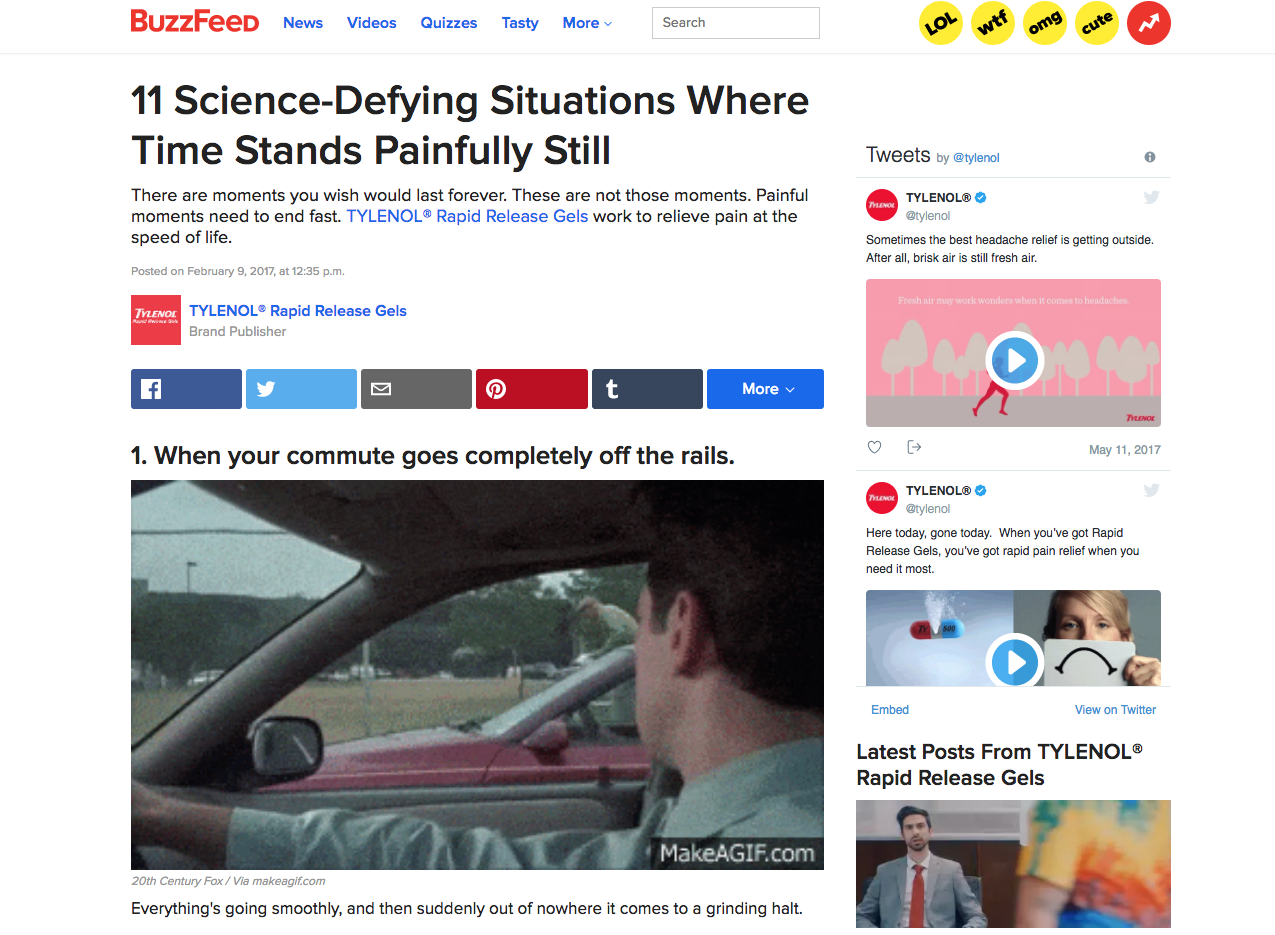
If the advertorial is for a podcast, make sure it flows when read out loud and sounds like something the host would actually say. Rollbar's ad in the ShopTalk Show keeps things conversational but gets technical when necessary, just like its hosts.
Throughout the piece, avoid using "we" or "our" language, which comes across as sales-y instead of helpful. A great advertorial will sound like a trusted publisher informing readers about a product rather than a straight-up sales pitch.
Pick the right format
Mirroring a publisher’s preferred story structure is just as important as writing in its voice.
Before writing an advertorial, scroll through the publisher’s website to see what types of content are most common. The most successful advertorials tell a brand’s story in a format that audiences enjoy and expect from a publisher.
Indie Hackers publishes interviews with founders of profitable companies and side projects. An advertorial by Vettery borrowed its popular Q&A format to communicate the hiring marketplace’s benefits and values. This helped Vettery’s advertorial blend with other content on the site and go in-depth into its product in a way that traditional articles don't allow.
Publishers might also opt for short content, meaning advertorials have to be equally brief. Advertorial examples on the Startup Curated newsletter match other entries by consisting of only a photo, headline, and paragraph.
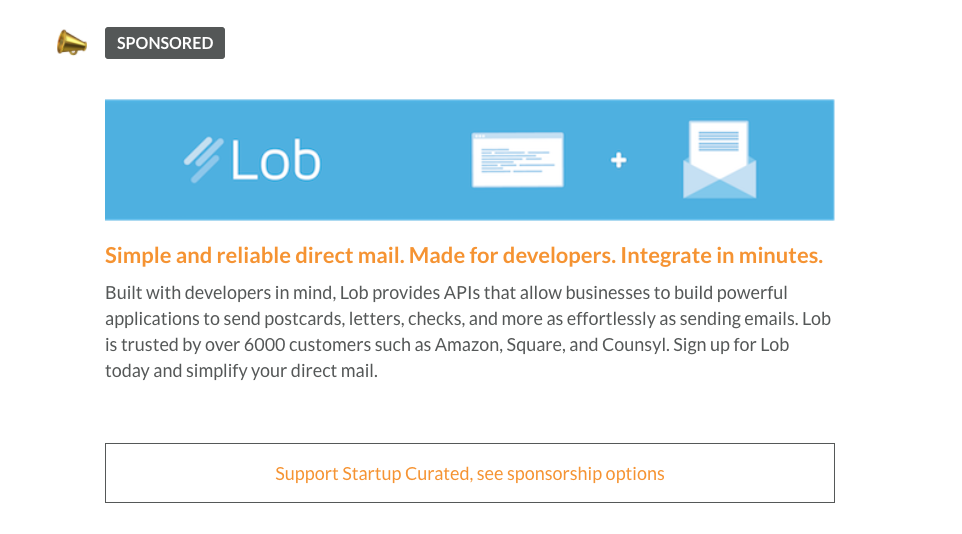
Whether an advertorial is 200 characters or 2,000 words, marketers should force themselves to be as brief as possible. Don't drone on and get lost in details—make the advertorial only as long as it needs to be to communicate value to the target audience.
Tell a story
Regardless of the chosen format, marketers should focus on telling a story through advertorials rather than making a hard sell.
Great advertorials don’t read like ads. Instead, they make targeted customers feel something through strong copywriting and storytelling. Marketers shouldn’t afraid to tap into emotions like amusement, frustration, anger, or surprise throughout the advertorial.
Laughing Squid features unique art, culture, and technology on its blog. An advertorial promoting an illustrative book of cats as the cast of Star Trek took an appropriately humorous, geeky approach to endear both trekkies and cat lovers. This advertorial proves that people will happily read or watch an ad if it incites emotion and feels relatable.
Marketers should look for successful pieces from the publisher and copy its storytelling formula. This ensures audiences will engage with the ad and helps brands feel more authentic and human to targeted customers.
Move beyond a sales pitch
Advertorials give marketers an opportunity to provide valuable content to an audience while also promoting a product or service. Balancing the two is key to gaining credibility with the target audience.
Good advertorials focus on benefits, not features. Marketers should communicate the human impact behind the product instead of reciting an elevator pitch.
Ahrefs' advertorial in Search Engine Journal does this by reading like a publisher introducing an audience to a helpful tool. The advertorial outlines how search engine marketers can use Ahrefs to borrow and improve upon competitors' tactics.
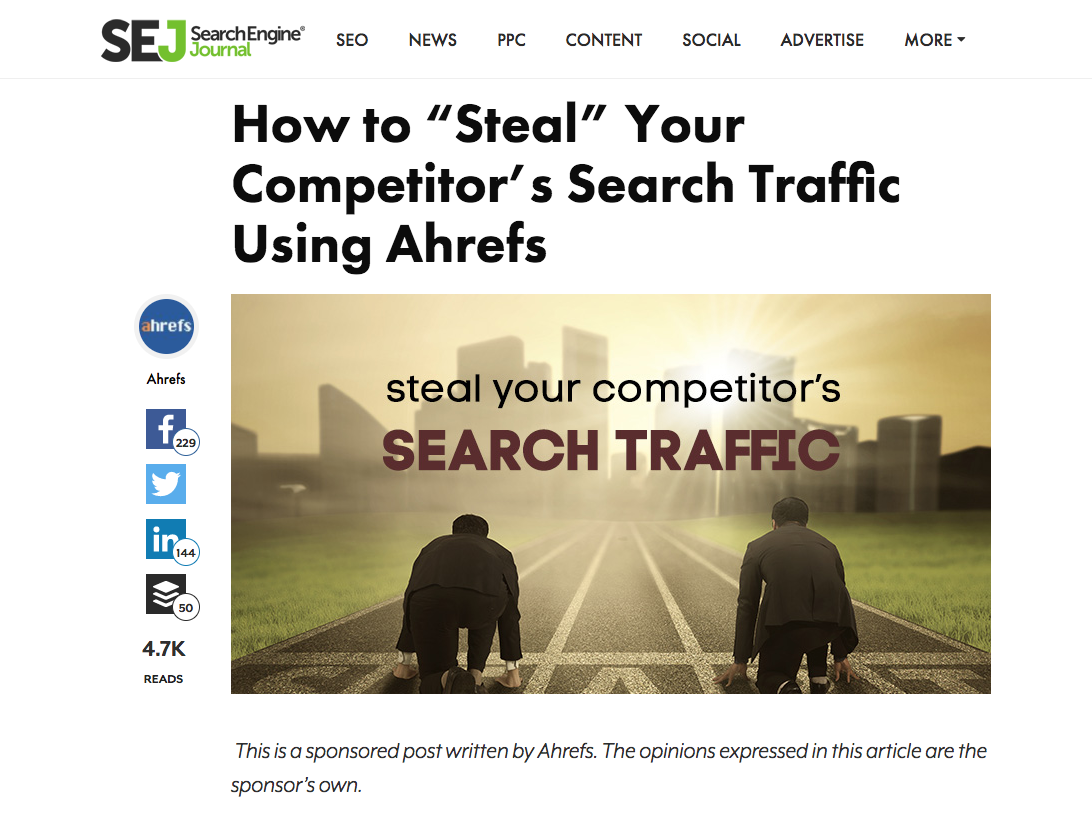
Marketers can strike this balance through a simple exercise. After writing an advertorial, remove all brand mentions and see whether the piece is still helpful or relevant to the target audience. If there's no story or value beyond the sales pitch, the advertorial needs some work. In this example, Ahref's advertorial earned hundreds of shares and thousands of reads because it was relevant despite being a marketing tactic.
Another method is writing advertorials with a formula of 70% content and 30% sales. Advertisers should use their content to provide context and only use sales information to communicate benefits.
Lead with a great headline
Once the body content is written, marketers need to turn their attention to the headline. The strongest advertorials begin with a headline that speaks directly to a publisher's audience and begs to be clicked.
Marketers can brainstorm great headlines by researching which kinds of titles the publisher usually writes. For example, Design Milk often includes unexpected or emotional words while Time headlines are factual and straightforward.
If that doesn't help, Buffer has an excellent article featuring more than 30 headline formulas. Before sending the piece to be published, test the headline with CoSchedule’s in-depth headline analyzer to get a read on word balance, length, keywords, and sentiment.
Close with an action
While a headline is the first impression to get clicks, the call to action is the kicker that inspires readers to take action. An effective advertorial always ends with a clear next step for interested users to learn more about a product.
Strong calls to action create urgency or need and reinforce a product or service's value to undecided users. Smart marketers will also include an exclusive offer or incentive for signing up through the advertorial. Especially with a tech-savvy or developer audience, a simple incentive like a t-shirt or extended free trial can be the nudge that tips them into your funnel.
The call to action should always be specific to the brand or product being featured. A job search tool's call to action might be "sign up now and start hacking your career", while a stock photography website might use "get your plan today and uncover your creativity." For more ideas, check out this list for 20 ways to write a call to action.
Advertorial examples to inspire you
Want to see these best practices in action? Let’s look at some advertorial examples that do a great job of selling a product while engaging customers.
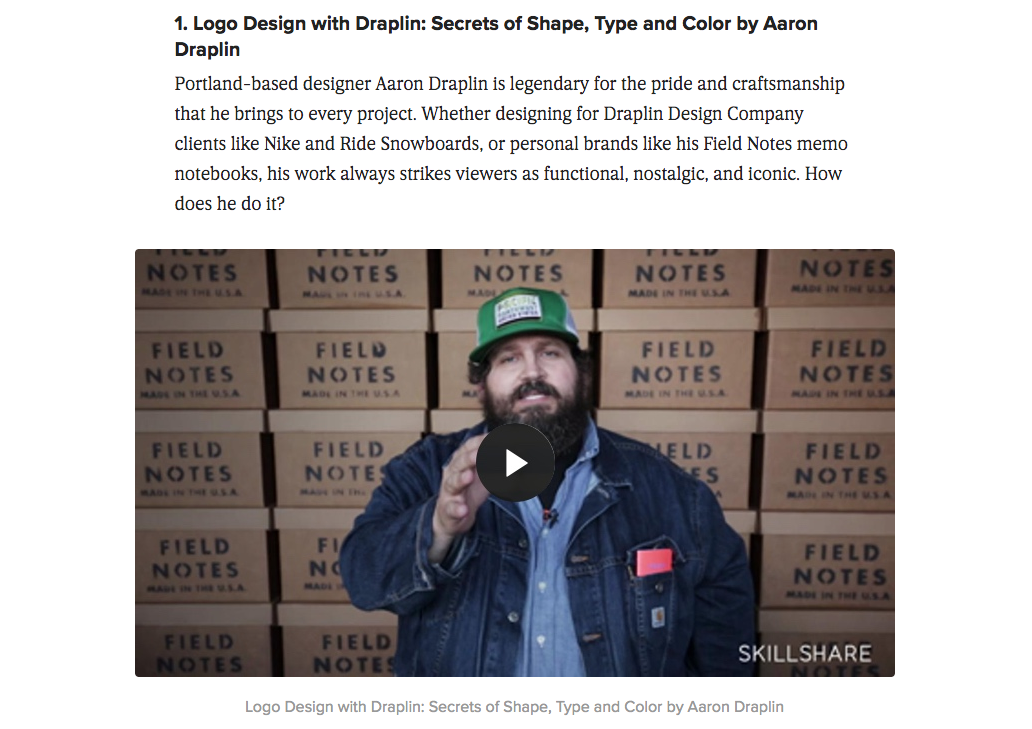
1. Skillshare on HeyDesigner
Online learning platform Skillshare ran an advertorial on HeyDesigner to promote its design courses. There’s a lot about this advertorial example that works. Here’s what you can learn from it:
- Can you turn your sales pitch into a story? In this case, Skillshare promoted four specific courses that designers might be interested in.
- Explain your product like you’d describe it to a friend. Calling its product “the Netflix for online learning” is succinct and obvious to readers.
2. Wix on CSS Tricks
Why would a web developer or designer use a website builder? Wix’s advertorial on CSS-Tricks answers this exact question. Borrow these best practices from this amazing advertorial example:
- Focus on one thing. Advertorials can suffer when a brand tries to make too many points at once. This advertorial’s focus on the Wix Code database gives it structure.
- Teach them something new. Wix’s advertorial show developers exactly how to use the Wix Code database and what they can do with it. This makes the advertorial feel more like a resource than a sales pitch.
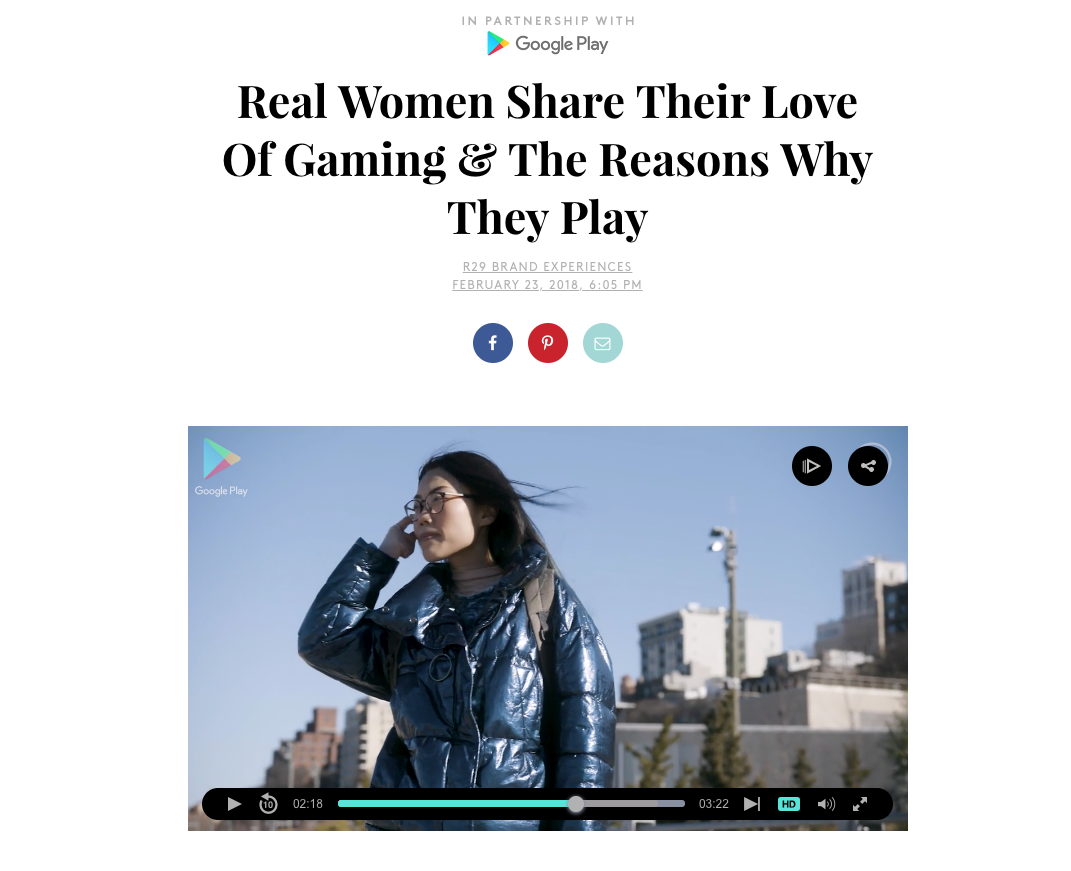
3. Google Play on Refinery29
Google Play published an advertorial on Refinery29 to raise attention of its study on gender breakdowns in mobile gaming. Watch it, and then copy its secrets:
- Know who you’re talking to. Young women follow Refinery29 to hear diverse points of view, so an advertorial about female gamers is relevant and topical to this audience.
- What format works best for your product? Not every advertorial has to be text. In this case, Google Play used video to humanize its product.
4. VPN Unlimited on Engadget
VPN Unlimited’s advertorial on Engadget does a great job of selling its lifetime subscription program. Copy these strategies for success:
- Start with a pain point—or teach people about a problem they didn’t know they had. VPN Unlimited’s advertorial paints a happy picture of connecting to free WiFi… followed by the horror of learning it’s probably not safe.
- What background info is needed for someone to buy from you? If your product is complicated, use your advertorial to explain how this product helps people in plain English.
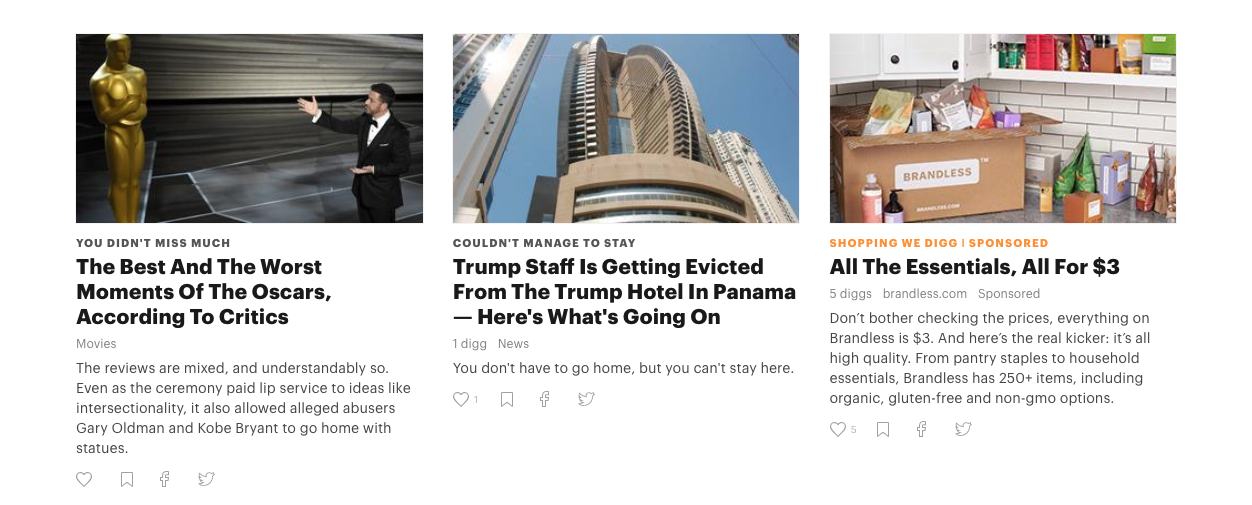
5. Brandless on Digg
To promote its $3 online store, Brandless published a homepage advertorial on Digg. Here’s what you can learn from this short and sweet advertorial:
- Can you explain your product in three sentences? Focus on your top two or three points, and make sure your biggest value proposition is front and center.
Attract, entertain, and sell to audiences
Advertorials come in all shapes and sizes, giving marketers unlimited opportunity to relate to target customers through storytelling. Writing creative, authentic advertorials can foster magical connections between brands and customers that don’t happen in other formats.
The best advertorials mirror the publisher's voice and format, tell a story that moves beyond a basic sales pitch, and begin and end with strong headlines and calls to action. By using these guidelines as a framework, writing advertorials can be an easy, effective way to share your marketing message and attract new enthusiasts and customers to your brand.
Ready to share your advertorial with the world? Partner with exclusive publishers to tell your brand’s story through Syndicate Ads.


